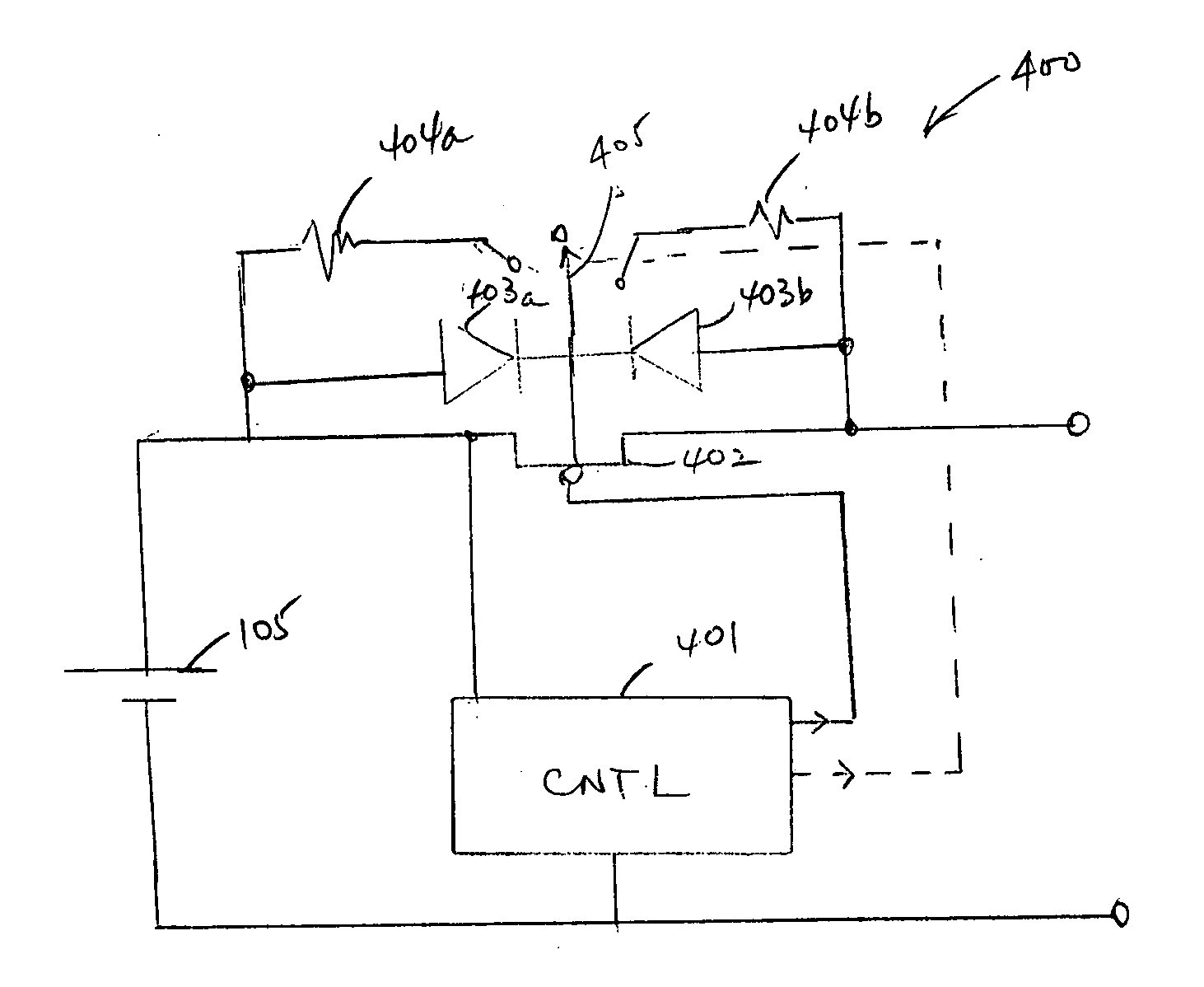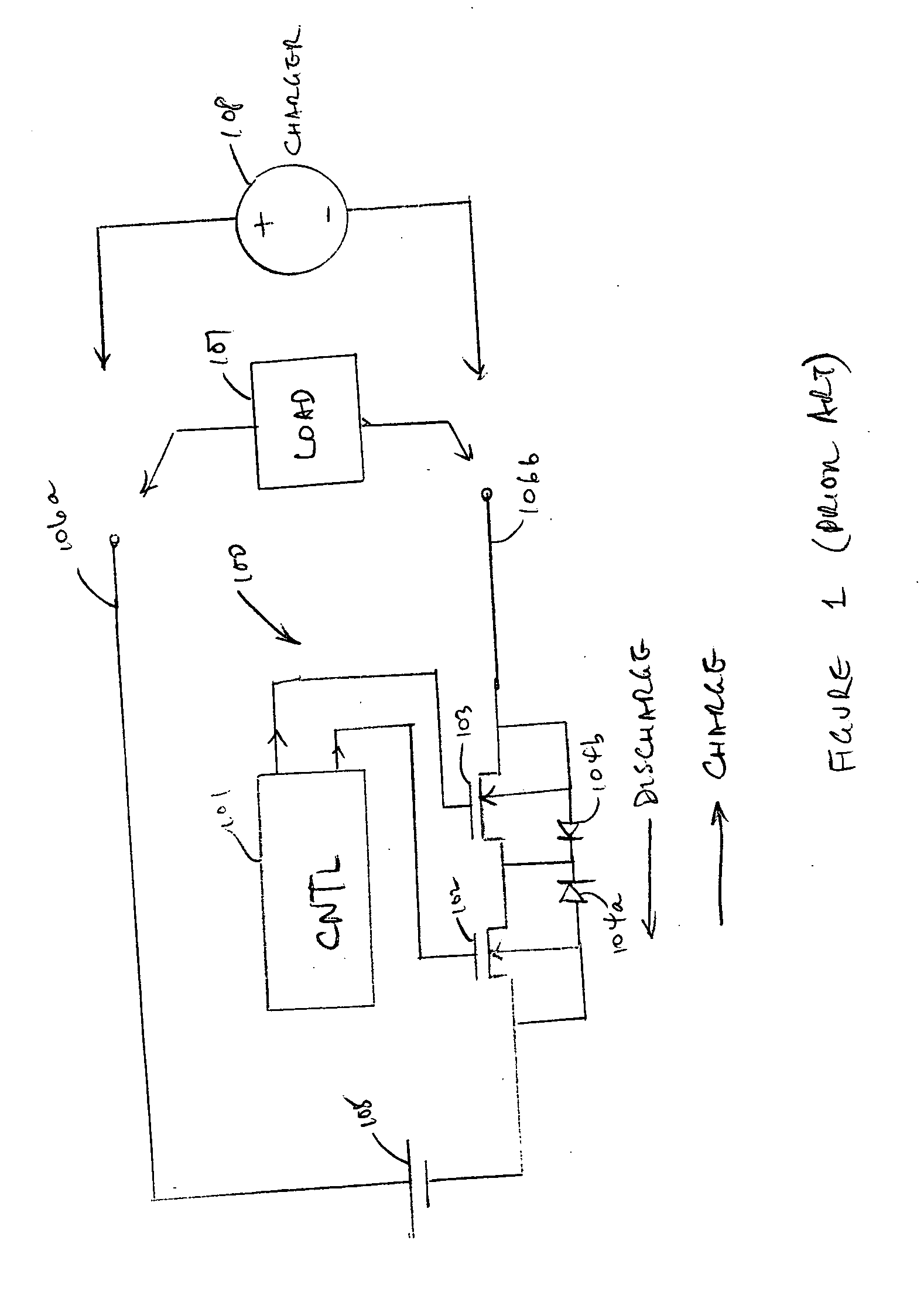Protective circuit
a protection circuit and circuit technology, applied in the direction of safety/protection circuits, battery disconnect circuits, electrical devices, etc., can solve the problems of affecting the safety of the battery circuit, the practical protection circuit cannot be allowed to draw more than a few microamperes of current, and the current may be detrimental, so as to achieve the safe operation of the battery circuit
- Summary
- Abstract
- Description
- Claims
- Application Information
AI Technical Summary
Benefits of technology
Problems solved by technology
Method used
Image
Examples
Embodiment Construction
[0024]FIG. 4 shows protective circuit 400, in accordance with one embodiment of the present invention. As shown in FIG. 4, protective circuit 400 includes control circuit 401, MOSFET 402, resistors 404a and 404b, and switch 405. MOSFET 402 includes parasitic diodes 403a and 403b, corresponding respectively to the junctions at its source and drain terminals. Under control of control circuit 401, switch 405 can selectively float the bulk terminal of MOSFET 402, or to connect the bulk terminal of MOSFET 402 to its source terminal or its drain terminal, through resistors 404a and 404b, respectively. During normal operation (i.e., either in a discharging operation or a charging operation), the bulk terminal of MOSFET 402 is allowed to float. Unlike protective circuit 200 of FIG. 2, by floating the bulk terminal of MOSFET 402, protective circuit 400 is not required to detect whether the operation is charging or discharging (hence, there is no need to determine which one of the drain termi...
PUM
 Login to View More
Login to View More Abstract
Description
Claims
Application Information
 Login to View More
Login to View More - R&D
- Intellectual Property
- Life Sciences
- Materials
- Tech Scout
- Unparalleled Data Quality
- Higher Quality Content
- 60% Fewer Hallucinations
Browse by: Latest US Patents, China's latest patents, Technical Efficacy Thesaurus, Application Domain, Technology Topic, Popular Technical Reports.
© 2025 PatSnap. All rights reserved.Legal|Privacy policy|Modern Slavery Act Transparency Statement|Sitemap|About US| Contact US: help@patsnap.com



